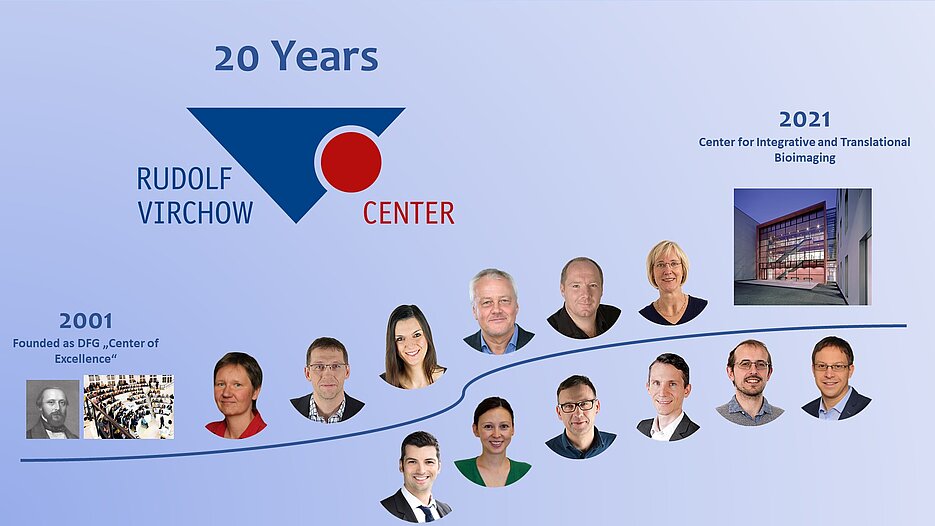Rudolf Virchow turns 200 - the RVZ turns 20!
10/13/2021The RVZ, like Rudolf Virchow, is celebrating an anniversary this year - it has been there for 20 years! From the very beginning, we have been engaged in thematically broad cutting-edge research.
State-of-the-art research for 20 years
As an interdisciplinary research center of the University of Würzburg, the RVZ is focusing on the visualization of elementary life processes on different scales, in the spirit of Rudolf Virchow.
Here at the RVZ, we do not only apply state-of-the-art imaging techniques, but also develop them further in a targeted manner. Our scientists "think microscopically" in Virchow's sense and adapt the microscopes to the specific questions. If necessary, they even push the limits of resolution, down to the individual molecule and its building blocks. Rudolf Virchow would have liked that!
Today, we combine high-resolution microscopy with computer-based simulation to test and evaluate complex scenarios of cell interactions. At the RVZ, common diseases such as heart attacks and strokes are being researched in order to expand therapeutic options in the future. What do blood clots have to do with our immune system? How can we treat patients better in the future? These and many other questions are driving us. How can our bodies control the repair of our DNA so precisely an protects us from disease? This is where structural biology comes in, deciphering the assembly and 3D structure of target proteins, using X-ray crystallography and cryo-electron microscopy. Knowing their exact structure provides new insights into their functions, how they interact with each other and control essential processes such as DNA repair. The protein structures provide crucial starting points for drug development against diseases such as cancer.
Rudolf Virchow as a shaping natural scientist
The eminent physician and natural scientist Rudolf Virchow developed the theory of cellular pathology in Würzburg in the 19th century. According to this theory, the cell is the smallest functional unit of an organism. Dysfunctions in the cell are the starting point for the development of diseases. This was the starting signal for a completely new understanding of disease origins and treatment approaches.
Virchow used and appreciated the technological innovations of his time, especially modern microscopy, to make fine tissue structures and even individual cells visible. According to Virchow, one must "think microscopically" to reform medical research with the microscope.
As the Rudolf Virchow Center, we gladly adopt this idea into our times, with their very own methodological challenges and possibilities, and look forward to further exciting years!



